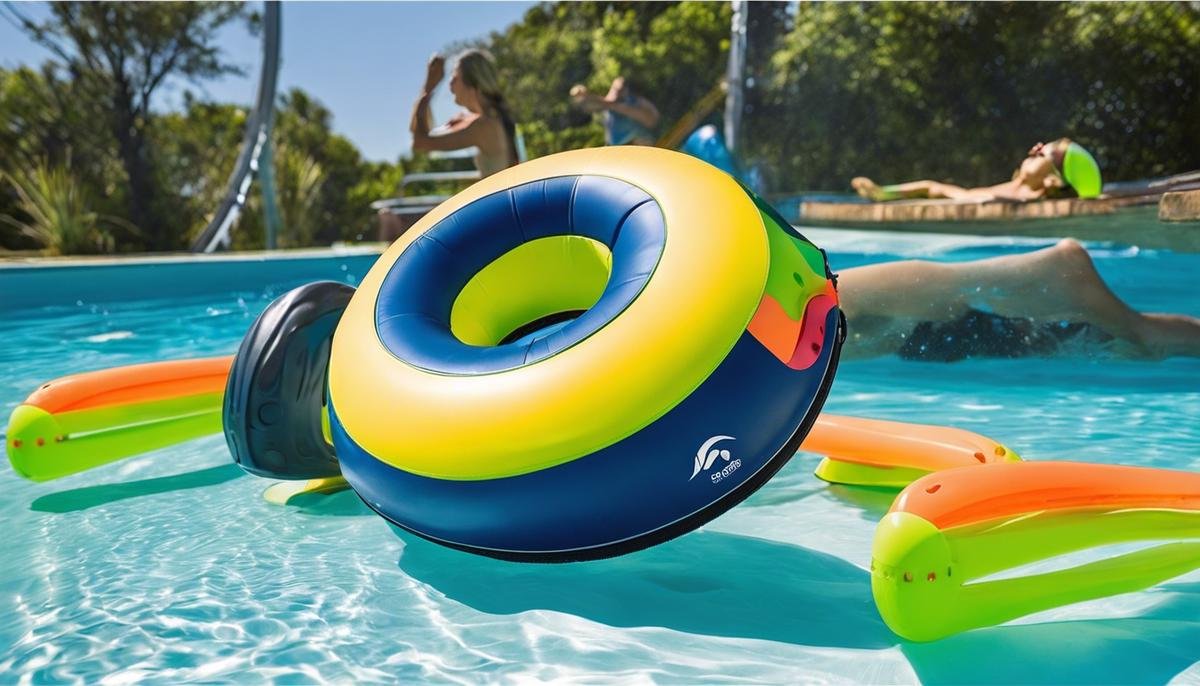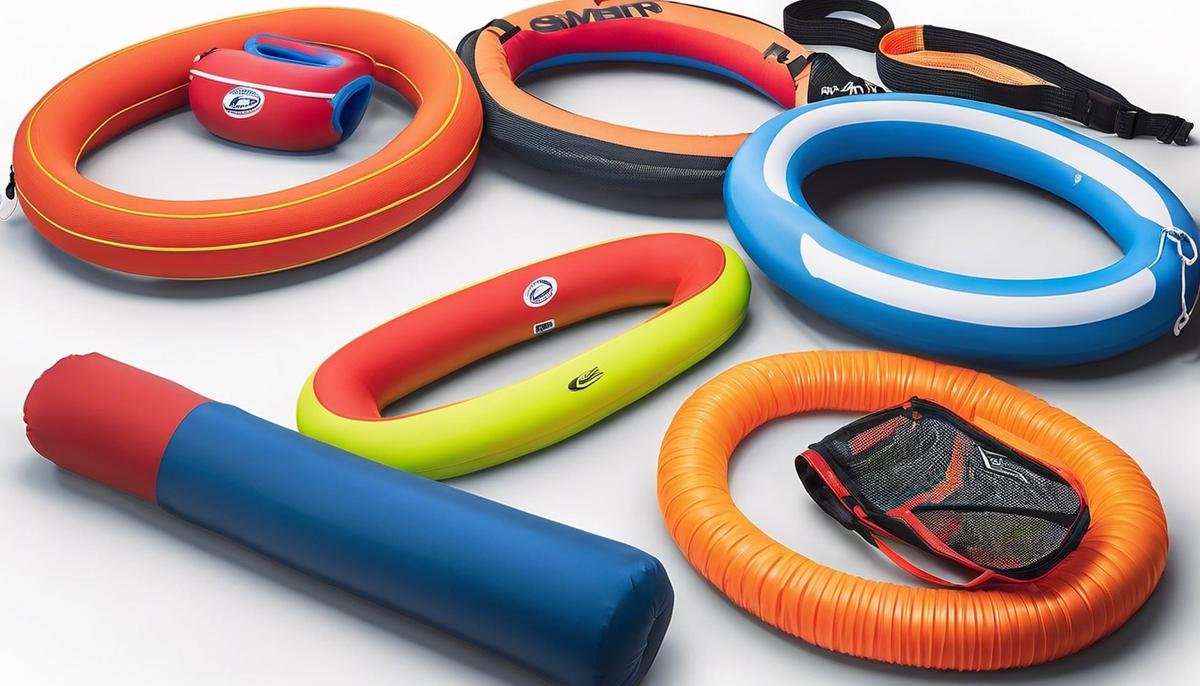
The dynamic nature of water offers a unique and therapeutic platform through which autistic children can hone their motor skills, build confidence, and ultimately foster their cognitive development. Swimming lessons not only cater to the physical health of these children but also prove beneficial in enriching their social skills and sensory integration. Such lessons, however, are not always a smooth sail. Autistic children tend to grapple with certain challenges such as sensory issues, communication struggles, and anxiety whenever they are in water. Nevertheless, with an apt choice of swimming aids, these hurdles can be effectively managed. This dialogue provides invaluable insights into the exciting world of swimming for autistic children, underscoring the important considerations when selecting swimming aids and how to seamlessly integrate them into their lessons and play.
The Importance of Swimming Lessons for Autistic Children
The Unseen Benefits of Swimming for Autistic Children
Did you know? Among the array of activities beneficial for children with autism, swimming stands out as a powerful tool that brings not only physical but also emotional and therapeutic benefits. Every child is unique, and this is especially true for children within the autism spectrum. Tailoring activities to their individual needs can seem daunting, but incorporating aquatic exercises into their routine could be a gamechanger.
Firstly, swimming could be a lifesaver — literally. Drowning is a significant danger for children with autism as they are often attracted to water. Gaining proficiency in swimming could potentially save their lives, providing peace of mind for parents as well.
But beyond that, swimming can come with significant therapeutic benefits. Water has a calming effect and provides a soothing environment for children with sensory sensitivities, typically observed in children with autism. The weightlessness and gentle resistance offered by water can act as a sensory blanket, offering comfort and tranquility.
What’s more, repetitive motions, such as kicking or stroking during swimming, can be incredibly calming to children on the spectrum. They often thrive with routines and patterns, making swimming a particularly good fit. When a child practices these repetitious movements in a pleasant environment, it can help to reduce anxiety and improve their emotional well-being.
Swimming also plays a critical role in enhancing motor skills and body coordination. It’s common for children with autism to exhibit motor skill deficits; swimming encompasses gross and fine motor skills that can improve balance and coordination.
Engaging in a structured activity such as swimming can also foster social and communication skills. During swimming lessons, children are exposed to new social scenarios, which can provide opportunities for interaction and communication. Instructors frequently encourage teamwork, which can help children on the spectrum to develop essential social skills.
Additionally, many children with autism love the water, enamored by its sights and sounds. Encouraging children to partake in activities they enjoy not only promotes their happiness but also builds a foundation where learning and therapy can seamlessly combine in a natural, enjoyable environment.
However, it’s not a one-size-fits-all solution, and care must always be taken to ensure the child’s comfort and safety. A qualified swimming instructor experienced in teaching children with special needs would be best suited for the job. These instructors are familiar with using specific techniques and incorporating behavioral support to provide a truly supportive and positive learning experience.
So, if someone asks, “Why should autistic children learn to swim?”, there’s no shortage of compelling reasons. From safety to therapeutic benefits to motor skill development to social skills enhancement- the list goes on, promising a positive, multifaceted impact on a child’s well-being. Of course, every child is individual, and what works for some might not for others, but swimming could put your child on a route to significant achievement and improvement, both inside and outside the pool. The key is to approach with sensitivity and respect for the child’s comfort and enjoyment.

The Challenges Autistic Children Face in Water
Unique Challenges Faced by Autistic Children in Swimming
Autistic children can experience the world in a way entirely different from other kids. Their cognitive process and physical responses create certain compelling obstacles that they have to deal with when participating in activities such as swimming. Understanding these unique challenges allows us to create a supportive environment for them to thrive in.
One of the most significant aspects for children with autism is the barrier of restrictive and repetitive behaviors. This is often because they find comfort in predictable routines and any form of deviation can trigger anxiety. It’s important to remember that swimming is a complex activity that asks for a variety of movements and changes in direction. Therefore, it might be a bit more challenging for autistic children who are used to specific repetitive actions. A slow, careful introduction of new movements can help this transition go smoothly.
Another unique challenge is their sensitivity to sensory stimuli. Autistic children are often hypersensitive to sensory input or utterly unresponsive to it. In swimming, an array of stimuli is constantly present; the feel of water against the skin, the sound of splashing, and the varying light reflections could easily overwhelm them. On the other hand, this also has the potential to not command their attention at all, which could become a safety issue. To tackle this, introducing an array of textures and stimuli gradually can help familiarize the autistic child with the different sensory elements of swimming, ultimately making the experience comfortable and enjoyable.
Autistic children also face challenges arising from social communication. They find making eye contact, understanding expressions and verbal cues, and verbal communication harder than other children. In the swimming pool, quick, effective communication is frequently necessary for ensuring safety and instruction compliance. But this could pose a hitch for autistic children who struggle with these aspects. Bonding and building trust between the child and the instructor is highly recommended.
Additionally, the capacity for flexible thinking, a necessity in swimming, may also constitute a unique challenge. Children with autism often struggle with shifting between activities, readily accepting changes, or dealing with unexpected situations. So, throwing a ball in the water or changing the depth of the water might unsettle them and deter their focus. Thus, creating a structured and well-anticipated lesson plan and gradually injecting elements of change could foster a positive response.
Finally, it’s crucial to remember that autism is a spectrum disorder; it presents itself differently in every child. Each will encounter their unique set of challenges with swimming. By understanding these nuances and working with them instead of against them, we can help autistic children harness the therapeutic benefits of swimming. With patience, understanding, and love, we can turn swimming lessons into a haven of safety, calm, and enjoyment for them.

What to Look for in Swimming Aids for Autistic Children
When choosing swimming aids for your autistic child, it’s crucial to consider several features tailored to their specific needs and challenges. These aids not only ensure their safety in the water, but can also provide comfort and enrich their swimming experience.
1. Comfort and Sensory Input:
Autism is often paired with sensitivity to sensory stimuli. Therefore, when selecting a swimming aid, it’s crucial to think about the material it’s made from. The aid should be comfortable against the child’s skin and avoid harsh fabrics or rigid structures that could cause discomfort.
2. Size and Adjustability:
Accurate sizing is crucial when purchasing a swimming aid, as a proper fit ensures the safety and effectiveness of the aid. Look for products which offer adjustability in their design, allowing customization to your child’s body size and shape.
3. Appropriate Buoyancy:
Finding a device with the right level of buoyancy is critical. Too much buoyancy might restrict movement, while too little could pose a risk. Remember, the goal isn’t just to keep the child afloat, but to aid them in learning swimming skills at their own comfort level.
4. Easy to Use:
Children with autism often struggle with change and learning new skills. Therefore, opt for aids that are easy to put on and remove without causing distress. This way, your child can focus on enjoying the water rather than the device they’re using.
5. Visual Appeal:
If your child has certain colors or patterns they show an affinity for, consider choosing an aid that incorporates these. Making the swimming aid attractive to your child can help them feel more comfortable and even create positive associations with swimming overall.
Remember, every child is different, so you might need to try a few different aids before you find the one that best matches your child’s needs. Flexibility and patience are key throughout this process. Also, when introducing swimming aids, it’s important to provide proper guidance and support to help your child understand its purpose and use.
In all, these considerations can create a much smoother and more joyful swimming experience for your child. So take the plunge, and happy swimming!

Recommended Swimming Aids for Autistic Children
The world of swimming aids for children is already a diverse one, but when it comes to autistic children, the options should be even more carefully considered to ensure that the aid is not only safe but also suitable for a child’s unique sensory needs. Here are some of the best swimming aids available designedkeeping in mind the specific needs of autistic children.
-
Konfidence Swim Jackets: These offer a great blend of comfort, buoyancy, and adjustability. The 8 removable floats allow for a personalized buoyancy level to gradually build confidence in the water. With soft neoprene fabric, this swimming aid prioritizes sensory comfort, and the bright yellow color can also be visually appealing for some children.
-
Water Gear Back Floats: Back Floats are an excellent device to keep autistic children upright and balance body coordination. A great advantage here is their adjustability. As the child progresses, you can remove layers from the back float to reduce buoyancy gradually.
-
Splash About Kids Float Suit: These suits come with adjustable buoyancy and provide the necessary sensory input without compromising on comfort. They are easy to use and offer independence to the child while in water. Plus, these suits are available in a range of exciting patterns and colors that can hold the interest of the child.
-
Swim Belts: Swim Belts offer enough buoyancy to help maintain body alignment in the water. They are easy to put on and adjust, and allow for unrestricted arm movement. Their design helps to encourage a better stroke and kick technique, both crucial for the development of motor skills.
-
Pool Noodles: Sometimes, the simplest aids are the most effective. Pool noodles can be a fun and flexible swimming aid for autistic children. With proper guidance, they can be used to enhance floating skills and allow children to feel the continuous movement of water, which can be calming for many.
Remember, every child on the spectrum is unique, so the effectiveness of these swimming aids can be subjective. Every tool comes down to how adaptive your child is towards it. Always be patient, and remember to provide ample support and guidance when introducing these aids. It may take a little trial and error to find the perfect fit, but finding an aid that your child resonates with can significantly enhance their swimming experience. Don’t forget to promote fun! After all, swimming should be an enjoyable activity for all kids. Happy swimming!

Integrating Swimming Aids into Lessons and Play
At the heart of every successful swimming journey for children with autism is the use of appropriate swimming aids. These are essential tools that can provide additional support and security during swimming lessons and playtimes. Integrating these aids strategically can be done in different ways, offering tailored solutions for individual children’s needs and creating an engaging, yet safe, water experience.
When it comes to choosing the right swimming aid, comfort and sensory input are pivotal. Various aids have different sensory impact levels – some may offer a tight fit while others provide a loose, free-flowing experience. Accommodating each child’s unique sensory needs is key. Particular attention should also be given to size and adjustability. An ill-fitting swimming aid can cause discomfort and create resistance to its usage.
Another consideration is the buoyancy provided by the aid. A high level of buoyancy may impede swimming, while too little may not provide enough support. It’s important to strike a balance – aids should allow freedom of movement while preventing the child from sinking. They should also be easy to use, not requiring complex adjustments that may cause frustration.
On a side note, the visual appeal of swimming aids can’t be overlooked. Vibrant colors or favorite characters can be a motivating factor for children.
It’s important for instructors to demonstrate flexibility and patience when integrating these aids into lessons and playtime. Every child learns at their own pace and might need time to get acquainted with a new swimming aid. Likewise, instructors should offer proper guidance and support, encouraging the child to use the aid confidently and correctly.
As for specific swimming aids, Konfidence Swim Jackets are excellent choices because they offer both comfort and the right amount of buoyancy. Water Gear Back Floats, on the other hand, are adjustable and easy to use, making them an ideal choice. Splash About Kids Float Suits come in various appealing designs, while Swim Belts and Pool Noodles provide practical buoyancy and are also fun to use.
Instructors together with parents can observe the child’s reaction and performance with each aid, making necessary adjustments or changes as needed. Regular consultation and involvement of the child in making these choices can also foster more interest and confidence.
Indeed, swimming aids – when chosen and used correctly – can be powerful allies in a child’s journey towards becoming a confident swimmer. By combining safety, comfort, and fun, these aids can turn swimming lessons and playtimes into enjoyable, therapeutic, and transformative experiences. Remember, it’s all about making the water a safe, inviting, and loving space for every child.

Undeniably, swimming lessons offer autistic children an avenue to improve their physical prowess, enhance their social interaction skills and cope with sensory issues. Choosing the right swimming aids makes the experience more beneficial and enjoyable for them. This, however, requires a careful assessment of the child’s specific needs, their level of comfort, and the safety elements of the swimming aid. Remember, each child is unique, and what works for one may not work for another. Therefore, it is crucial to incorporate the child’s preference when selecting a swimming aid. Lastly, while the journey may sometimes seem rough, patience, constant encouragements, and a touch of fun during the lessons go a long way in bolstering an autistic child’s confidence in water.




